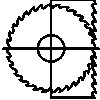-
Posts
129 -
Joined
-
Last visited
About lehmann
- Birthday 07/21/1960
Profile Information
-
Gender
Male
-
Location
Surrey, BC, Canada
-
Interests
USS Constitution: Scratch build solid hull 1:96 scale
Member Nautical Research Society
Recent Profile Visitors
-
 CiscoH reacted to a post in a topic:
Re-hardening Brass
CiscoH reacted to a post in a topic:
Re-hardening Brass
-
 GRATEFUL LITTLE PHISH reacted to a post in a topic:
Filler Blocks
GRATEFUL LITTLE PHISH reacted to a post in a topic:
Filler Blocks
-
 mtaylor reacted to a post in a topic:
How to sail a square rigger?
mtaylor reacted to a post in a topic:
How to sail a square rigger?
-
For a modern book, look for the US Coast Guard manual for their square rig training ship Eagle. Available on Amazon and Abe Books. Eagle Seamanship: A Manual for Square-Rigger Sailing by Christopher Nolan USCG and Eric C Jones
-
 Altduck reacted to a post in a topic:
Proportional Dividers
Altduck reacted to a post in a topic:
Proportional Dividers
-
 Clark Griswold reacted to a post in a topic:
Can this wood be saved?
Clark Griswold reacted to a post in a topic:
Can this wood be saved?
-
 mtaylor reacted to a post in a topic:
Rigging Supplies
mtaylor reacted to a post in a topic:
Rigging Supplies
-
Greetings from the Mainland, What are the diameters of the seine twine? I just bought a spool of the AWF 60 lb test bright wire from Amazon for a totally different purpose - to restring my parallel ruler on my drafting board. Remember to remove the nylon coating for your model. This wire is stainless steel, so it would be good to know if it can be blackened. Lastly, some people may want to know the diameters by test.
-
 lehmann reacted to a post in a topic:
Difference between editions of David Steel's books on rigging etc
lehmann reacted to a post in a topic:
Difference between editions of David Steel's books on rigging etc
-
 BobG reacted to a post in a topic:
Measurement tools?
BobG reacted to a post in a topic:
Measurement tools?
-
 mtaylor reacted to a post in a topic:
Measurement tools?
mtaylor reacted to a post in a topic:
Measurement tools?
-
 CPDDET reacted to a post in a topic:
Measurement tools?
CPDDET reacted to a post in a topic:
Measurement tools?
-
There are digital dividers, such as IGaging Digital Divider/Compass Not cheap, but not exorbitant. However, before becoming obsessed with small measurements, remember that it is also not possible to manually draw small objects accurately. CAD can do better, but there is still always a line width that is typically several pixels wide. If the part is small, the dimensions should correspond, in scale, to something a person can pick up or grab by hand. So, adjust your numbers accordingly. Actually, for small parts it's the relative dimensions (proportion) that matter the most. For instance, a ship's wheel. The diameter is easy to measure, but the spokes and handles have be in proportion otherwise it will look like a gear. The eye and brain can be fooled by scale, but they pick up errors in proportion easily. Making small adjustments to ensure proportion, or the appearance of proportion, is one of the skills of modelling. If the part is bigger, then scaling with the points of calipers should be close enough. At 1/8 to the foot scale, 0.005 inches, which is obtainable with calipers on a drawing, is only 1/2 inch in full size.
-
 mtaylor reacted to a post in a topic:
The saws that cut the wood that made the ships.
mtaylor reacted to a post in a topic:
The saws that cut the wood that made the ships.
-

The saws that cut the wood that made the ships.
lehmann replied to bruce d's topic in Nautical/Naval History
Spear & Jackson is still around, although they have merged with other companies, as has happened to Disston Saw. They are no longer making the larger saws used in sawmills and ship yards, but they were still applying for patents for insert teeth (Figure 79, page 64) in the 1980's. Several people I worked with did their saw-maker/saw-filer apprenticeship at S&J plant near Vancouver, Canada. -
Agree. Spruces all have a definite late-wood "line" with a softer early-wood between. The wood has a high strength to weight ratio, hence the use in spars and airplanes, but only if the grain is straight and the edges of the board are parallel to the grain (no grain angle or run-out). Some sawmills in my area ( British Columbia, Canada) are still occasionally cutting Sitka spruce, but mostly for Asian markets, which are willing to pay high $. Logs that meet the standards for a Japanese temple log can sell for $30,000. A wedge for making cello backs sold for $130 (20 years ago!). As to how the sample ended up in Australia, there has long been a export trade from British Columbia and Alaska with Australia. Direct delivery by ship.
-
One boat missing from your list is the Spray - Josha Slocum. Blue Jacket models has a kit: http://www.bluejacketinc.com/kits/spray.htm
-

Need CAD type program
lehmann replied to Sambini's topic in CAD and 3D Modelling/Drafting Plans with Software
Draftsight is a free, fully functional 2D drafting program from the same company that produces SolidWorks (3D cad). Basically, a similar program to AutoCad or TurboCad. I've run it on both Windows and Linux systems -
I recently pickup this pickling chemical from a local jewelry supplier. Pro-Craft Pickling compound (No. 45.122): Sodium Bisulfate. 10 oz bottle makes 1 quart. Solution works well at room temperature, but faster at about 125 F.
-

Can you identify this feature? 19th century 1st Rates
lehmann replied to Martocticvs's topic in Nautical/Naval History
They look a bit like running lights. -
Pre-bend planking: looks like a feature you should have paid more for. I would just wet the areas with the hardest bends/twists to avoid creating fuzzy grain and water stain. Maybe heat with hot iron. The longer, slower bends should straighten out as needed, although if you're planning to rip into strips, they could be awkward. What is the intended use?
-

Home made thicknessing sander if
lehmann replied to Cabbie's topic in Modeling tools and Workshop Equipment
I have two of these sleeveless drums from Lee Valley Sleeveless sanding drums. The picture on the web page doesn't show the method for holding the sheet of sandpaper, but it works very well. There is a slot in the drum to insert the two ends of the sheet and a simple, but effective locking method. No problem getting the sheet tight around the drum. I see that they are also sold at https://woodworker.com/1x3-w-14-shaft-sander-sleeveless-drum-mssu-815-895.asp. The picture there gives some idea of the slot and design. -

What is the purpose of these holes in this block?
lehmann replied to Louie da fly's topic in Masting, rigging and sails
There are a lot of features that don't make sense for this to be a regular block. The top lateral through-hole would not be able to take much load as the end-grain would easily pull out. For this to take a tension load there would have to be an iron band around the block. This is a large block, so it's not for small rope or small loads. Also, if the outer corners are relatively square, so chaffing would soon cut the rope. To me, this means a pin, wooden or metal, went through the through-hole. The tops of the pulley mortises appear to intersect with the bottom of the lateral through-hole. The pulley pin is not centered in the block. It's more towards the left in the side view. It's too far off to think it wasn't made that way This may indicate that the back of the block is against a surface. However, the rounded ends of the rope mortises indicates that the rope should only go over the top of the pulleys. Based on the location of the pulley hole and the diameter of the pulley, the rope just run down across the "front" face, but could not run down the "back" face. This means the rope turned through and angle of, say 90 degrees, certainly not 180. The large opening above the pulley will also make it easier to run the rope through the pulley, which may indicate that the block was used frequently, but the rigging was temporary or changed often. Since these blocks were made by hand, no one is going to dig out a mortise larger than necessary, Based on the tight opening around the bottom of the pulley, it doesn't look like the pulley was worn down. There is more asymmetries: in the side view, the top right corner is relatively sharp, the top is sloped and the left corner is very rounded. in the side view, the shoulder for the tenon seems to be only on the back side. I don't know how a shoulder on the front side can be justified. To me it looks like a rabbet on the "back" side only. the top of the mortise for the middle pulley is slightly higher, and appears to intersect with the bottom of the lateral through-hole. Overall, I think the block is intended for the corner of a deck or railing where ropes need to turn roughly 90 degrees. The flat back and the rabbet take the horizontal and vertical compression sload, and the three holes on the bottom are possibly for trunnels to hold the block in place and take the tension load that would develop there. Consider that the block may mounted horizontally, not vertically. I realize that this doesn't explain the lateral through-hole, but I suspect a pin or bar went there, not a rope. -
Greg, The source of almost all published properties for North American woods is from the USDA book "Wood Handbook: Wood as an Engineering Material" based on tests done at the Forest Products Lab in Madison WI, and similar facilities in Canada. Click on the link to go to a page to download the book. (It's free, paid for by US tax payers) Boxwood isn't listed in the USDA book, probably because the volumes of commercial harvest are so small and it's not used for structures. I haven't been able to find a source for the Wood Database numbers. The listed properties on the Wood Database are extremely high, which leads me to think it's closer to ironwood or purple heart (very dense and doesn't float!). Definitely not the wood used for planking, but excellent for carving details. Keep in mind that the published values are averages and that the range is typically at least 15% either way, mainly dependent on growing conditions. For instance, second growth (re-planted after a forest has been logged) is generally less dense with larger annual rings than old growth because the growing trees are not shaped by mature trees around them so they grow very fast. While not strictly true, it is often said that there is more variation in a wood property within a single tree of any species than there is between species.
-
This doesn't sound like the the yellow cedar I'm used to, which has a hardness similar to black walnut. It's a slow growing species, so generally has very fine grain with faint annual rings. No way I can indent it with a finger nail without really trying, especially after it has seasoned for a while. Excellent wood for holding detail in carvings. Maybe the source is a second growth stand in open sun light, which will grow quickly and has a lower density.
-

Filler Blocks
lehmann replied to olopa67's topic in Building, Framing, Planking and plating a ships hull and deck
Filling all the gaps is probably not a good idea, although tempting. On another post (Drazen), someone had filled all the spaces between frames with solid wood. The problem is that wood will move with humidity, and he ended up with cracks in the planking, especially at points where the filler piece wanted to move and the plywood bulk head didn't. The lessons from that, at least for me, were: leave a gap between the filler and the bulkhead. If not a gap, put a soft layer of cardboard that can flex and shear as the wood moves align the grain of the filler with the grain of the planking. Wood doesn't change length much with humidity, but it does change length. Over-constraining wood structures is never a good thing. There was also a discussion that the change in width of a plank with humidity for flat grain boards is almost twice that of edge grain. Overall, I would add more bulkheads: fit them in as best as possible then fair them. This is how "real" ships are built and it eliminates the flat spots when the bulkhead spacing is large and gives more points to tie to when bending around hard curves.
About us
Modelshipworld - Advancing Ship Modeling through Research
SSL Secured
Your security is important for us so this Website is SSL-Secured
NRG Mailing Address
Nautical Research Guild
237 South Lincoln Street
Westmont IL, 60559-1917
Model Ship World ® and the MSW logo are Registered Trademarks, and belong to the Nautical Research Guild (United States Patent and Trademark Office: No. 6,929,264 & No. 6,929,274, registered Dec. 20, 2022)
Helpful Links
About the NRG
If you enjoy building ship models that are historically accurate as well as beautiful, then The Nautical Research Guild (NRG) is just right for you.
The Guild is a non-profit educational organization whose mission is to “Advance Ship Modeling Through Research”. We provide support to our members in their efforts to raise the quality of their model ships.
The Nautical Research Guild has published our world-renowned quarterly magazine, The Nautical Research Journal, since 1955. The pages of the Journal are full of articles by accomplished ship modelers who show you how they create those exquisite details on their models, and by maritime historians who show you the correct details to build. The Journal is available in both print and digital editions. Go to the NRG web site (www.thenrg.org) to download a complimentary digital copy of the Journal. The NRG also publishes plan sets, books and compilations of back issues of the Journal and the former Ships in Scale and Model Ship Builder magazines.



